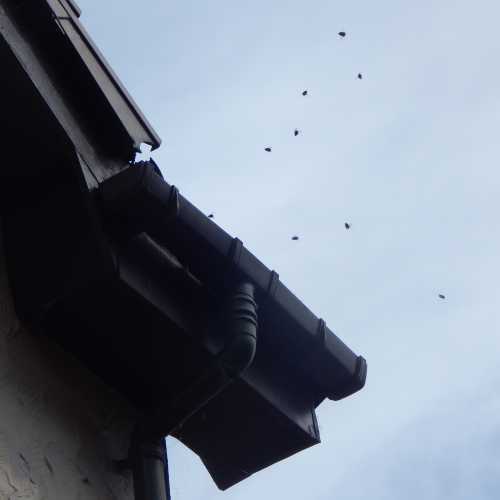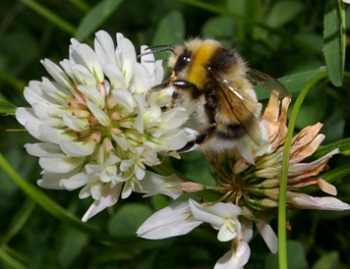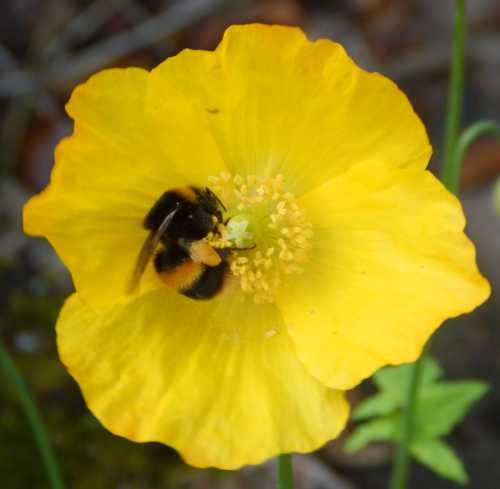Can Bumble Bees Damage Your Property, House Or Wooden Structures?
I frequently receive queries by visitors who wonder whether bumble bees will cause damage to their property, house, or a particular wooden structure.
3 Reasons Why Bumble Bees Will NOT Damage Your Property, House Or Wood Fencing and Structures
 Bumble bees flying around the entrance of a nest in the eaves of a house
Bumble bees flying around the entrance of a nest in the eaves of a housePreviously, I answered a visitor query about whether or not bumble bees could cause damage in a roof, loft or attic space, but I still receive queries regarding other aspects of property, sometimes relating to the house or other structures made of wood, such as sheds, fences and gazebos.
Bumble bees will not cause damage to any of these, for the following reasons:
1. Bumble bees do not gnaw into wood or masonry
Whilst bumble bees do have mandibles (jaws) which they use for biting (for example, to bite into flowers whilst nectar robbing), they do not excavate holes in wood or masonry.
Most bumble bees nest underground1. Any bumble bees nesting around your property will be using pre-existing cavities, they will not have created new ones, nor will they even enlarge an existing one. Some bumble bees species - the carders - make their nests in the open, on grassy tussocks.
2. Bumble bees do not collect masonry or wood materials for creating nest cells
Some wasp species collect tiny slivers of wood and plant material with which they create nest cells (resulting in architectural masterpieces).
Bumble bees, on the other hand, lay their eggs and store food in temporary wax cups.
This wax is created by the bees themselves.
3. Bumble nests are temporary
Bumble bee nests only last a season, after which, the whole colony will die, and the new, impregnated queens will overwinter and re-merge the following year to rear colonies of their own.
If you are concerned about the nest site, then as soon as the nest is no longer active, remove any debris. Wear gloves and check there are no bees remaining. Cavities can then be plugged.
Don't leave it too late, or you may disturb overwintering, sleepy queens (although nests are not necessarily reused). It would be a shame to disturb an overwintering new queen, since queens ensure future generations of bumble bees. Hence, it is better to perform the task of clearing debris and plugging cavities as early as possible, and once you notice the bees are no longer going in and out of the entrance.
Help with bumble bee nests

Find out how I responded to real queries about bumble bee nests:
Disturbed nest, accidentally 'damaged' - what can I do to help?
A bee nest in the attic, and workmen are arriving soon
Will this bumble bee nest attract wasps?
Will bumble bees cause damage in my roof?
References
1. Liczner, A.R., Colla, S.R. A systematic review of the nesting and overwintering habitat of bumble bees globally. J Insect Conserv 23, 787–801 (2019). https://doi.org/10.1007/s10841-019-00173-7
If you found this page helpful or interesting, I'd really be grateful if you would share it with others - if not this page, perhaps another, such as Gardening For Bees.
Thank you so much :) .

